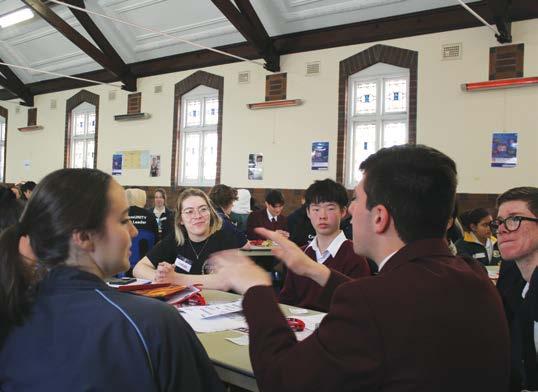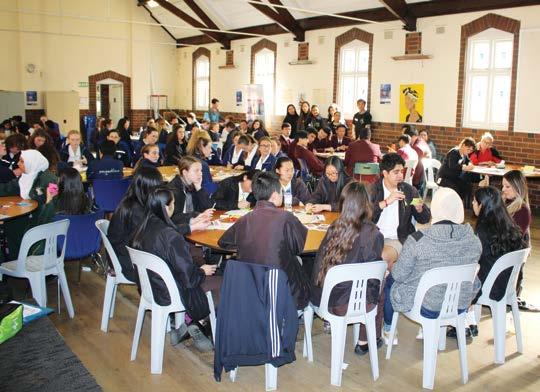
3 minute read
Peer education’s role in breaking the stigma and ignorance of people seeking asylum
LUIZA KNIJNIK
Luiza Knijnik, 16, is a student of Caringbah High School in Sydney, and the editor of OurWoke, (1) an online magazine for young people which focuses on environmental, political and human rights issues. She is also a youth leader at the School’s Refugee Forum and part of the young people organising the project, Changing the Narrative. Luiza is also part of the NSW youth parliament (YMCA program) as a youth MP, representing Heathcote electorate.
Advertisement
As the 13-year-old girl who was once one of the ‘boat people’ reached the end of her story, we all gave her a standing ovation. Another girl stepped up on the stage and hugged her. It felt like the whole packed room was embracing them.
She was finally heard.
This inspiring scene happened during a peer education program called High School Refugee Forum. Peer education involves learning through one’s colleagues and peers. The peer educator is of the same social group of the learner, such as being of a similar age. Peer education pedagogy is grounded in the credibility that young people have with their peers. In Sydney, organisations such as NSW Health employ peer education to discuss topics such as sexuality and health in the program Play Safe Summer.
The High School Refugee Forum was developed in 2017 in South Sydney for young people to learn about and discuss the challenges faced by refugees and people seeking asylum. So far over 500 students have been involved. This is the first time peer education has been used on this scale to break stigma and ignorance around refugee issues. The program was developed by young people and is run by Gymea Community Aid and Information Services, Jesuit Refugee Services, Carlton Shopfront, 3Bridges YouthZone, Sutherland Shire and Georges River Council. Local youth leaders organised and ran the full day forums, featuring immersive learning and table talk conversations, with the chance to hear personal stories of why people were seeking refuge in Australia.
Peer education changes minds and hearts. Students find their opinions about people seeking asylum transform. They say, for example: “I began to see them (refugees and people seeking asylum) as individuals with personal stories rather than as a collective group of people” and “it provided us with a different perspective than how the media portrays it.” “The forum was important because we needed to have our voices heard,” said youth leader, Maram.
Following the forums, schools were able to apply for funding to build their own initiatives. Students from Beverly Hills Girls High School and Engadine High School worked together to develop and lead a program called ‘Cultural Connections’ with peer educational activities and workshops focusing on experiencing and appreciating different cultures, enhancing and learning how to stand up against racism and prejudice. Kogarah High School students will host the refugee challenge in 2020, an immersive experience on the journey of a refugee. The youth leaders of the High School Refugee Forum received a NSW Government grant to continue their work, and will deliver the ‘Changing the Narrative’ festival in 2020.
The High School Refugee Forum has the potential to be used as a model for other Australian schools and communities. It shows the value of peer education and for young people to have their voices heard. There is no better way to change the stigma and ignorance about people seeking asylum than to have programs in which young people share their own lived experiences and engage in respectful discussions. In turn, young people with lived experiences feel heard and accepted.
As Elle, a youth leader in the High School Refugee Forum says: “What we need now is for the people to take control of their own thoughts, stop listening to the narrative the media feeds them. That is when we will change the narrative. That is when we will break the stigma.”
1. See: ourwoke.com

Students participating in table talk discussions about issues and challenges people seeking asylum have to face.

A student reading out answers to a myth busting quiz.








